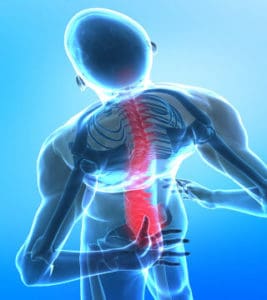Long-term pain in Hyattsville: Could it possibly be in your head?

May 26, 2017
Pain is an unavoidable part of life. Whether it’s stubbing your toe the first thing in the morning, nursing a tender ankle that you recently sprained while running, or a stabbing pain near the heel that you seem to get every time you walk up stairs, most of us can recall a recent time where we dealt with some form of pain. But for some people, pain doesn’t just pay a visit every so often. Instead, it’s a constant guest in their body that makes their daily lives much more complicated. This is called chronic pain, and we’d like to share some insights that may help those of you dealing with this type of pain in Hyattsville right now to better understand your condition.
Understanding what actually causes pain and why it exists in the body is important for several reasons, but most important is the fact that research shows a better comprehension of pain can actually improve patients’ outcomes. Pain science and pain education aim to accomplish just this, by explaining the mechanisms behind pain and how they can be overcome.
When you think of pain, you might view it as something that occurs “out there,” in the body part that it exists, and possibly confined to that area. But the truth is that pain is actually an output from the brain rather than an input from the body. So when you stub your toe, for example, there are nerve endings that send warning signals to the brain, but no pain is felt until the brain interprets this information and decides that pain would be helpful to the body in some way (e.g. put ice on your toe). As the command center of our bodies, the brain decides when something is wrong and when it is necessary to send out a pain signal. This is done as a survival mechanism that motivates us to address it.
Taking it a step further, this means that in some cases you might be in pain when you’re not actually hurt, or in no pain when you’re hurt badly. An extreme example would be someone who is attacked by a bear in the wild and survives. In this situation, the person will usually not feel any pain until they have reached safety, because they are already in survival mode, and feeling pain will make survival even more difficult. On the other end of the spectrum, your body may think you’re in pain when there is no damage to your tissues at all. This can be due to emotional or psychological factors, or a condition called allodynia, in which a slight touch like the covers touching your toes can lead to excruciating pain.
Another important concept to understand is the fact that pain breeds pain. The longer pain goes on—such as chronic low back or knee pain—the easier it becomes to feel the pain. If this process continues in the long term, it means that less and less of a stimulus is needed to cause the same amount of pain. This can be further worsened by extreme emotional states like anger, depression and anxiety, which can reduce tolerance to pain even more.
How this all relates to your chronic pain in Hyattsville
Now that you have a basic understanding of how pain works, what does it all mean to your condition if you’re dealing with chronic pain in Hyattsville? First off, know that if your body is working well, any damage will usually heal to the best extent possible within a few weeks or months. But when pain continues in the long term without any new source of harm or damage (i.e. chronic pain), there may be a problem with how the brain is perceiving or sending out pain signals, rather than with the body itself. So if you’re in pain, there is at least some chance that it may be in your head and you’re not actually hurt. This means that instead of focusing only on treatments that address the painful body part, it is essential to look at the bigger picture.
At CAM Physical Therapy and Wellness Services, we want to help you better understand you chronic pain and develop strategies to more effectively address it. Ayana Hypolite, DPT, director of our Hyattsville clinic, is a firm believer in the importance and power of pain education, as she feels it’s necessary for helping patients improve functional mobility. So if you’re dealing with chronic pain or any other sort of pain, we can help you by getting to the root of the problem and figuring out the best ways to address it. Contact us at 301-853-0093 to schedule an appointment today, or click here to read the full article on pain education from Todd Hargrove’s Better Movement website.